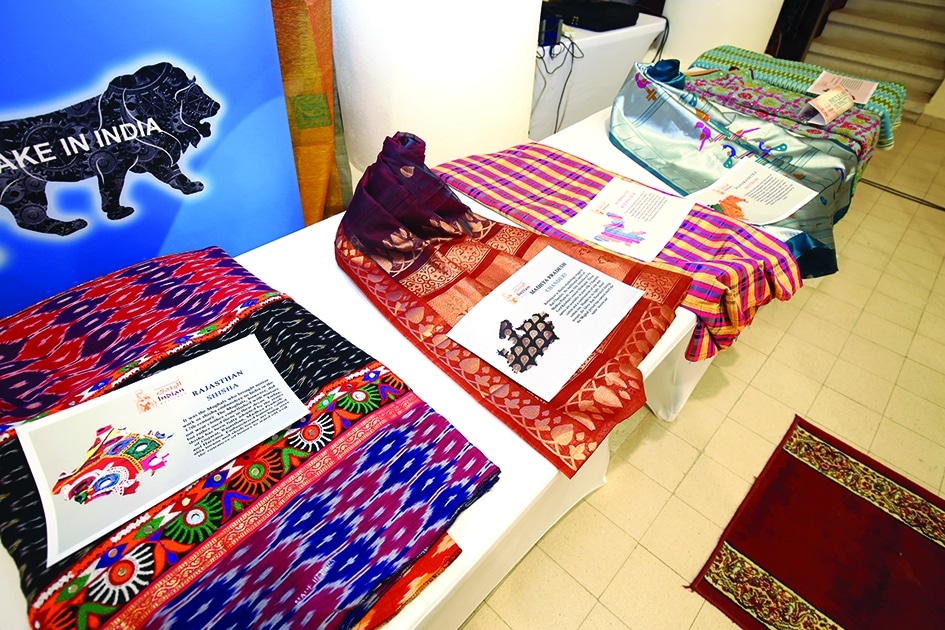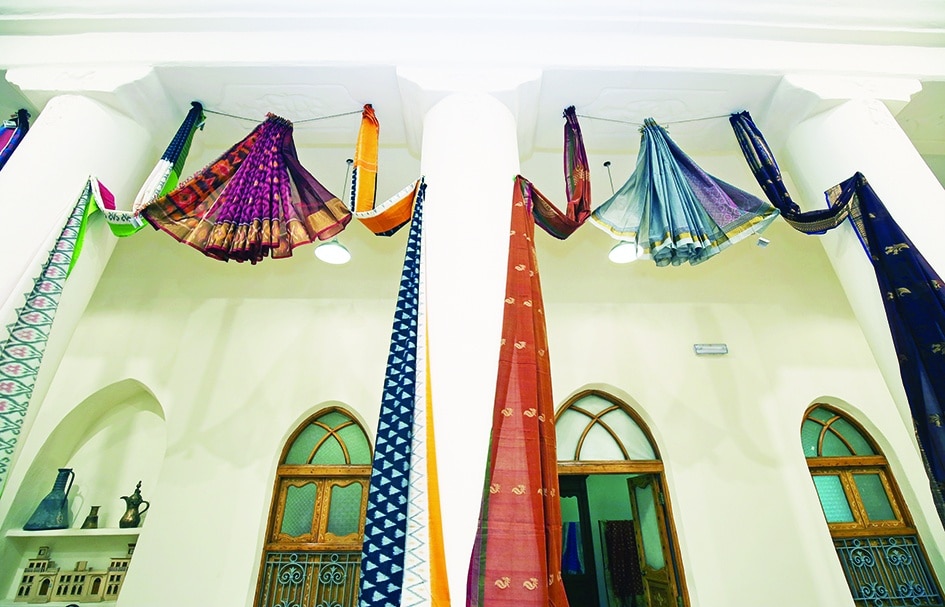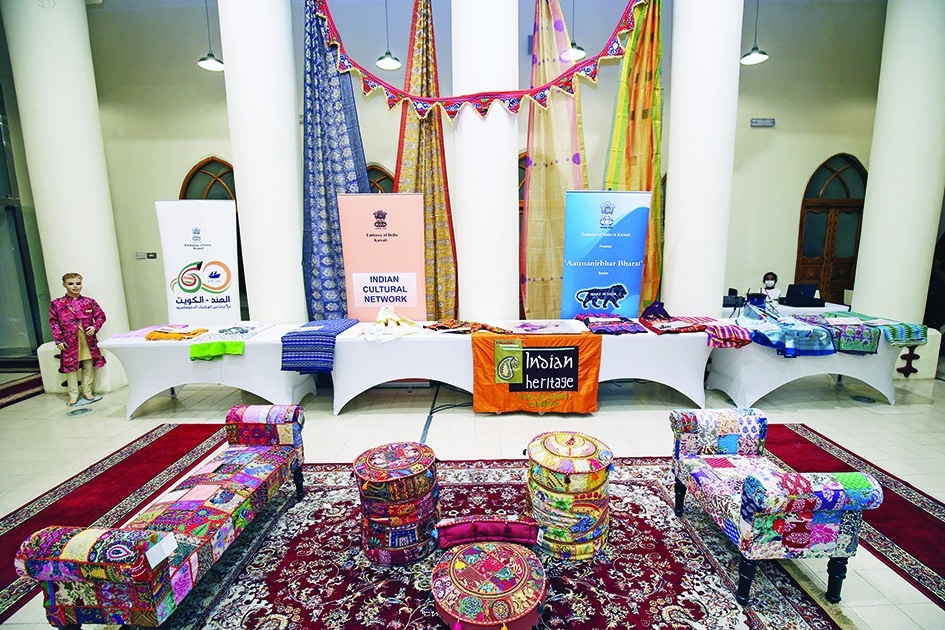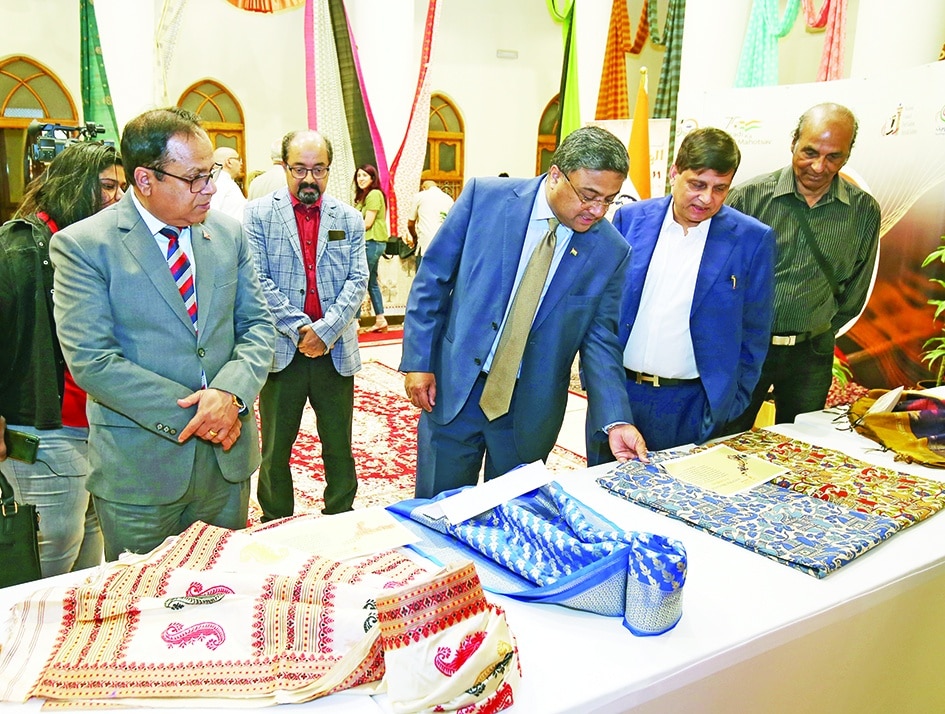By Sajeev K Peter
The 'Indian Handloom Exhibition', organized by the Indian Embassy, in association with National Council for Culture, Arts and Letters (NCCAL), at Sadu House on Sunday is a symbolic representation of India's diverse and rich handloom sector. Each textile piece on display reflects the aesthetic intricacies involved in the craft and the cultural richness and elegance of India's distinct handloom tradition.
The exhibition was jointly inaugurated by Indian Ambassador Sibi George and NCCAL's Assistant Secretary-General for Cultural Affairs Dr Bader Al-Duwaish. The exhibition is open for public from 10 am to 8 pm until May 31. “This exhibition is part of the yearlong celebration we launched last year to mark the 60th anniversary of establishment of diplomatic relations between India and Kuwait,” the ambassador told a press conference on Sunday on the sidelines of the exhibition.
A tour of the exhibition will help you realize how the handspun and woven fabrics from handlooms are integral to India's cultural identity. From Jammu and Kashmir to Kerala and Tamil Nadu, from North East to Rajasthan and Gujarat, handloom crafts in diverse variety and style are spread across thousands of towns and villages in all states of India. Indian artists are now distinguished worldwide for their hand-spinning, weaving and printing elegance. The visitors will not only get to see the exquisite handloom products of each Indian state on display, but can get a glimpse of each region's geography and culture.
For instance, 'Pochampally Ikat' textile works from Bhoodan, Pochampally in Telengana state is known for its geometric patterns and an intentional bleed. With 5,000 looms in the Pochampally village weaving this ikat fabric, the place has found a place on UNESCO's tentative list of World Heritage Sites as part of the iconic sari-weaving clusters of India.



Similarly, a hand-woven silk sari from the town of Paithan in Maharashtra, vouches for effort-intensive process of weaving the garment. Interestingly, Paithani fabric looks exactly the same on both sides. History of the Bandhani handloom of Gujarat dates back to the Indus Valley Civilization, where dyeing was done as early as 4000 BC. Made by the Khatri community of Gujarat, this gorgeous tie-dye textile is usually found in multiple colors like yellow, blue, green and red and features white dots that form interesting patterns on the fabric.
Dubbed as the pride of Kerala, the 'Kasavu' is the traditional off-white and gold Kasavu sari and is famously worn by women of the Malayali community on festival occasions. Kasavu actually refers to the golden sari border on dhoti-sari that is hand-woven, using 100 percent unbleached cotton. These saris feature line designs at the bottoms and sometimes peacock designs as well.
Similarly, Kalamkari of Andhra Pradesh comes from the Persian words 'qalam' meaning pen and 'kari' means craftsmanship. This art form, which was particularly patronized by the Mughals, is now more popular as block-print used on saris, dupattas and more. Chikkankari from Uttar Pradesh, Muga Silk from Assam, Lepcha from Sikkim and Shisha from Rajasthan were among the other the exquisite handloom garments are on display at the exhibition.











